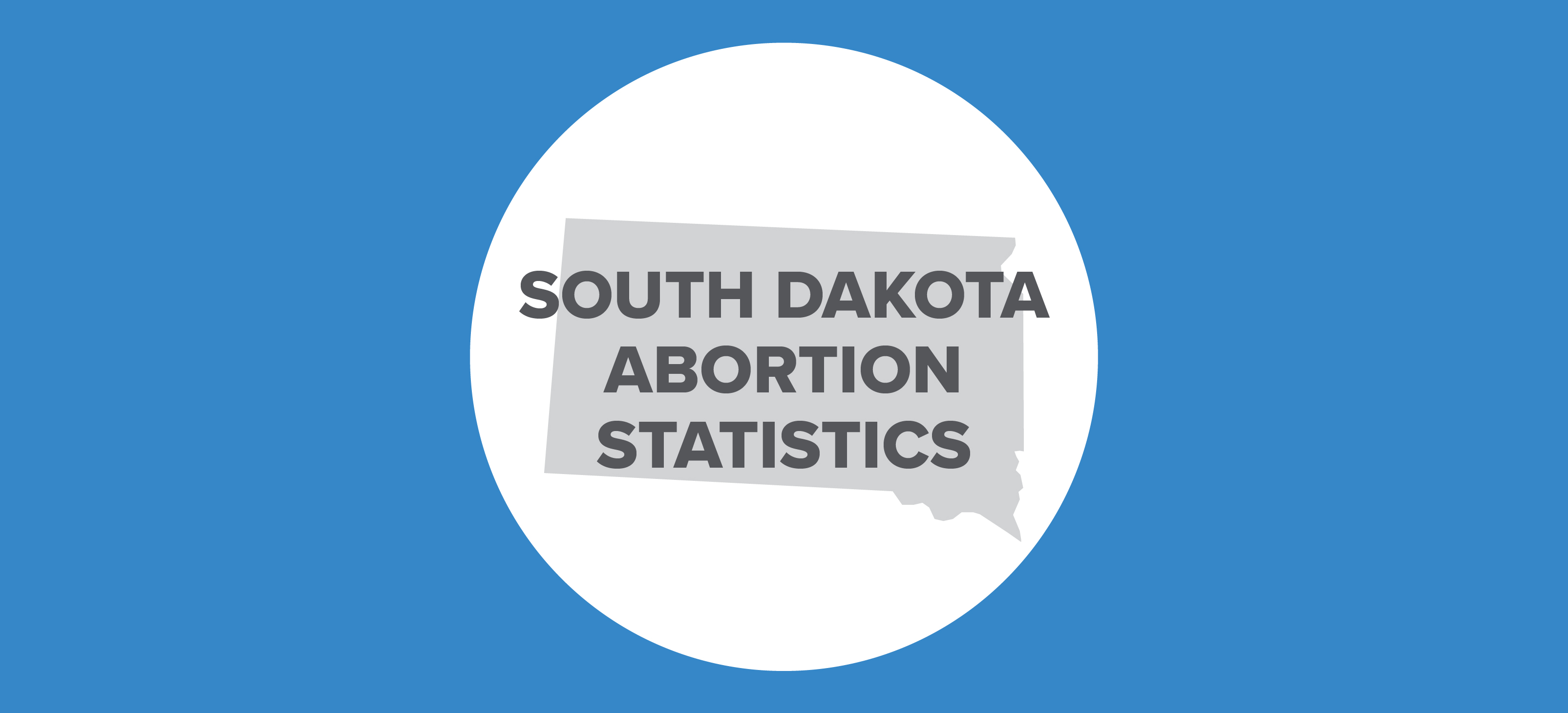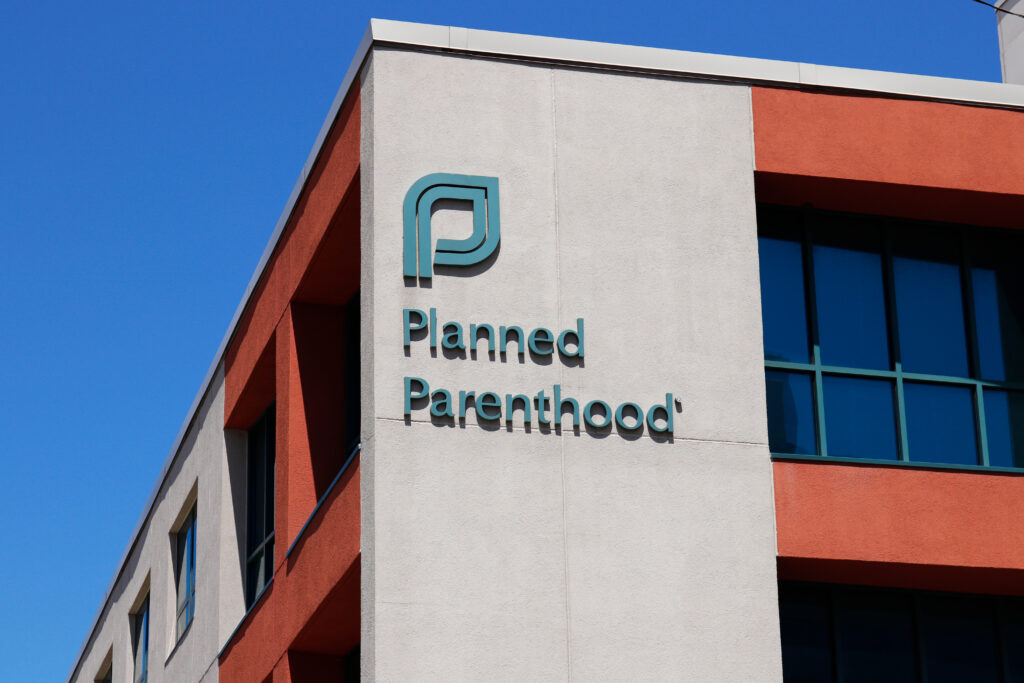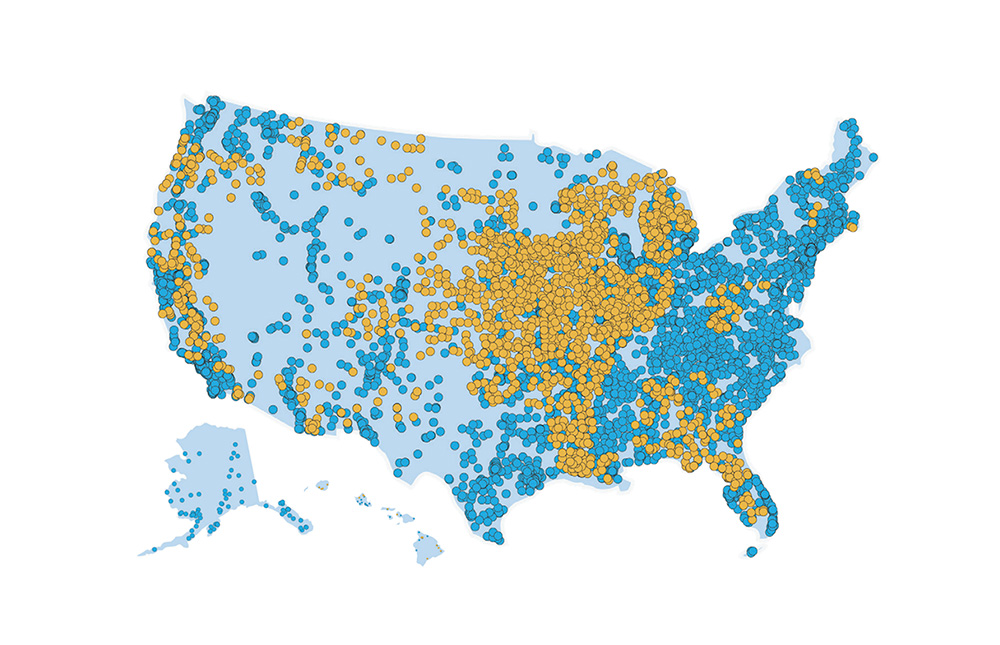Abortion Reporting: South Dakota (2016)

South Dakota’s 2016 abortion report reveals that abortion in the state is up from the previous year. The abortion report, published in November by the state’s Department of Health, comprises 12 pages in the annual vital statistics report.
Changes in South Dakota Abortions, 2015-2016

Abortion Totals and Trends
In 2016, there were 471 abortions performed in South Dakota (Figure 1). This was an increase of six percent from the previous year, when 444 abortions occurred, but a decline of 71 percent from 1974, South Dakota’s first full year of reporting after the Supreme Court legalized abortion across the United States. South Dakota’s abortion data from 1974 is available in an online database. Chemical abortions made up 40 percent of total abortions in 2016. Chemical abortions increased by six percent from 2015 but fell by 24 percent from 2008, the first year with chemical abortion data available online. South Dakota does not report the state abortion rate, although the Charlotte Lozier Institute estimates that the state rate (2.98 abortions for every 1,000 South Dakotan women of childbearing age) has increased slightly since 2015 (Figure 2).
State Report Summary
Eighty-seven percent of the abortions occurring in South Dakota were performed on state residents. Ten percent of the women seeking abortion in South Dakota were under the age of nineteen. Most women, 58 percent, were in their twenties, while 29 percent were in their thirties and 3 percent were 40 years old or older. Seventy-three percent of abortions in South Dakota were performed on white women. Thirty-eight percent had a high school education or less, 32 percent had completed some college, and 30 percent had a college degree, vocational-technical certification, or similar. Eighty-two percent of the women were not married. Slightly more than half of women had at least one living child. Not quite 24 percent already had one child, and 34 percent had two or more children.
Seventy-eight percent of the women who had abortions had never had a miscarriage, while 67 percent had not had a previous abortion. South Dakota requires women to give informed consent before undergoing abortions; in 2016, there were 561 informed consent forms submitted to the state. Eighty-four percent of the women who received informed consent information went on to have abortions, while 16 percent decided against abortion. South Dakota also requires parental notification before minors may procure abortions. In 2016, there were 11 parental consent forms submitted to the state. In 10 cases parents were notified, and in one case the minor obtained a judicial bypass allowing her to forego parental notification. All 11 girls went on to have abortions.
The majority of abortions in South Dakota occurred early in pregnancy. Twenty-three percent of abortions were performed at six weeks gestation or less and 70 percent were performed between seven and 12 weeks gestation, while less than seven percent were performed after 12 weeks. South Dakota is one of only a few states to report the weights of the babies killed by abortion, and the report states that 27 percent of the unborn children aborted in 2016 weighed less than 100 grams (approximately 3.5 ounces). Ten percent weighed 100 grams or more, while the weights for the remaining 63 percent were not reported. The most frequently used method of disposal of fetal remains was incineration, with 60 percent of unborn children discarded in this manner. Anesthesia was used during 60 percent of abortion procedures. Almost 90 percent of abortions were self-funded; the rest were paid for with private insurance (seven percent) or public funds (less than four percent). South Dakota Medicaid covers abortion only when necessary to preserve the life of the mother.
Seventy-one percent of the physicians performing abortions in South Dakota specialized in obstetrics and gynecology, 29 percent specialized in family medicine, and less than half a percent specialized in maternal and fetal medicine. South Dakota does not identify the facilities that perform abortions; however, the only abortion clinic in the state is operated by Planned Parenthood, making it likely that a high majority of the abortions occurring in the state are performed by Planned Parenthood. A 2014 Guttmacher Institute survey located two abortion facilities in South Dakota, one of which was a clinic and one of which was a facility of another type, most likely a doctor’s office or hospital performing a relatively low volume of abortion procedures. In 2016, five abortions resulted in complications and a second procedure was used in almost six percent of abortions, although South Dakota does not specify the types of complications or the abortion procedures that caused them1.
Reason for the Abortion
South Dakota asks women to share their reasons for choosing abortion. Women may provide more than one reason. In 2016, sixty-four percent of women said that they chose abortion because they did not desire the child. Forty-five percent said they could not afford a baby, and 16 percent cited their emotional health. Similar to trends in the rest of the nation, only a small portion of women in South Dakota chose abortion because of danger to their physical health or because of incest or rape. Less than seven percent chose to abort because the pregnancy posed a significant risk to their health. Less than one percent, four women, sought abortion because their pregnancies were the result of rape or incest. Nineteen percent gave other reasons. South Dakota also records whether any of the babies killed by abortion were known to have a fetal abnormality, although this information was not known for almost 99 percent of abortions.
State Ranking
South Dakota was ranked in the top 10 states by a Charlotte Lozier Institute study that surveyed abortion reporting across the 50 states, New York City, and the District of Columbia. However, the state could improve its reporting by publishing information on complications. South Dakota already collects this data on the mandatory reporting forms that are submitted to the state by doctors who perform abortions. At the same time, South Dakota reports data elements that most other states do not, including the weights of children killed in abortion and the method of payment used. Overall, South Dakota’s abortion report is detailed and thorough.


- Statistics on abortion complications reported here represent a minimal number of deaths and complications, as this data is collected in a non-systematic and non-verifiable way. As such, this data cannot be used to calculate either an accurate abortion mortality rate, nor an accurate abortion complication rate for the state.
- South Dakota reports the percentage of chemical abortions, but it does not report actual numbers. Chemical abortion numbers were calculated using the reported percentages.
- South Dakota does not report the state abortion rate. Rates were calculated by the Charlotte Lozier Institute using population estimates from the United States Census Bureau. The rates were calculated using the following formula: (total number of abortions performed in South Dakota ÷ number of resident women ages 15-44) x 1,000.
Click here to view reporting from:2023202220212020201920182017





















